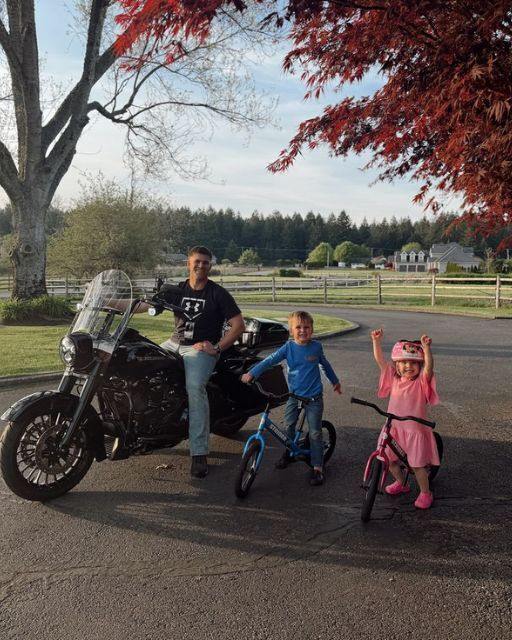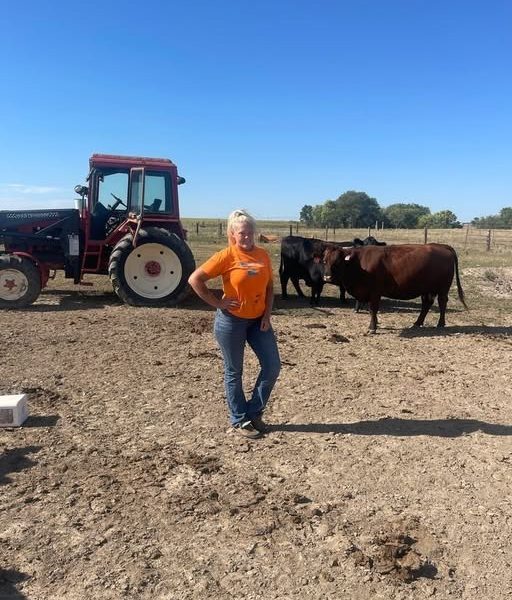For twelve months the garage felt like a mausoleum. Every time I stepped over the oil stain I saw Mia tightening her bubble-gum-pink helmet, heard her laugh ricocheting off cinder-block walls. We bought the Harley right after our honeymoon—nicknamed it our “rolling couch” because therapy cost ninety bucks an hour and gasoline cost three. Then came the intersection, the texting driver, the moment a forty-mile-an-hour joy became a lifetime of silence. I sold the bike two weeks after the funeral, convinced that if I stared at chrome long enough I’d forget how to breathe.
Grief, I learned, doesn’t leave; it just changes uniforms. My seven-year-old, Jace, started whispering to empty air where the Harley used to sit. When I asked who he was talking to, he said, “Mom. She liked when I told her stuff on the bike.” Lila—only four—stopped drawing rainbow motorcycles and folded her crayons into a drawer. I told myself I was protecting them by erasing reminders. Really, I was protecting me from remembering how alive I used to feel.
One hot Saturday the kids burst through the screen door like twin hurricanes. “Dad! There’s a man on your motorcycle!” I followed their pointing fingers to the curb and nearly dropped the lemonade. Flaming tank, scuffed right grip, Mia’s old bell dangling from the clutch—every dent exactly where grief had parked it. The rider, a sun-leathered guy named Rick, killed the engine and grinned. “Thought you should see her again.”
He showed up the next morning holding a folded flyer: THE IRON CIRCLE RIDERS—We ride together. No one rides alone. Same deal, he said—buy the Harley back for what I sold it for, but first I had to join one group ride. My pulse pounded louder than any exhaust pipe. I mumbled I’d think about it, but the kids were already pulling helmets from storage, eyes shining like high beams.
Sunday came gray and still. I rolled the bike out, hands shaking so badly I missed the ignition twice. Rick led six other riders into the hills—forty miles of pasture scent and pine shadows. Somewhere between mile marker twenty and forever, the road blurred. Not from tears—though there were plenty—but from the moment Mia’s laughter seemed to slip into the slipstream beside me. A woman named Tasha rode parallel, braid snapping like a pennant. At the overlook I spilled the whole story: the accident, the guilt, the pink helmet boxed in the attic. She listened, then said, “She’d be proud you’re still steering.” Quiet conviction has a horsepower all its own.
We rode back at dusk. I signed the check, but Rick pushed it away. “Pay me when you’re ready. She’s already yours—always was.” That night I bolted a sidecar to the frame, padded it with Lila’s old car-seat foam, and strapped Jace behind me. We cruised neighborhood streets under a moon so bright it felt like a spotlight on healing. Jace leaned forward and whispered, “Mom would love this.” For the first time since the funeral, the wind didn’t feel like a slap—it felt like Mia’s hand on my back, nudging me forward.
Now Friday nights are “memory rides.” The kids pick the route: past the elementary school where Mia taught, down the boulevard that used to host Christmas-light contests, out to the hill where we scattered some of her ashes. We ring the bell at the top, a tiny chime against the vast dark, and Lila waves like she’s greeting every star. I no longer ride to outrun grief; I ride to keep pace with it, to prove that love and loss can share the same tank of gas.
If you’re hoarding pain the way I hoarded empty garage space, consider this: the thing you’re terrified to face might be the exact vehicle that carries you forward. Sell the bike, sell the house, sell yourself short—but memories will still roar like throttle in neutral. Sometimes courage looks like turning the key, feeling the engine sync with your heartbeat, and letting the road remind you that you never have to ride alone.


